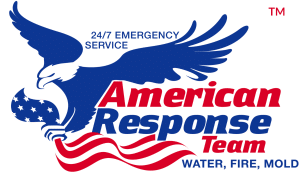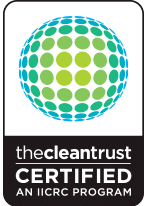Mold is a type of fungus that grows in damp and humid environments. It can grow on almost any surface, including wood, carpet, and drywall. While mold is a common household problem, many people are not aware of the health risks associated with mold exposure. In this article, we will explore the health risks of mold exposure and provide you with practical tips on how to protect yourself from its harmful effects.
Health risks associated with mold exposure
Exposure to mold can cause a range of health problems, particularly for individuals with allergies or compromised immune systems. The most common health problems associated with mold exposure include:
Respiratory issues
Mold spores can trigger respiratory problems, such as coughing, wheezing, and difficulty breathing. These symptoms are particularly common in individuals with asthma or other respiratory conditions. Prolonged exposure to mold can also cause chronic respiratory problems, such as bronchitis and pneumonia.
Allergies
Mold spores are a common allergen and can cause allergic reactions, such as sneezing, runny nose, and itchy eyes. Individuals with preexisting allergies are particularly susceptible to mold-related allergies.
Skin irritation
Prolonged exposure to mold can cause skin irritation, such as itching, redness, and rashes. These symptoms are particularly common in individuals who are allergic to mold.
Headaches and fatigue
Mold exposure can cause headaches and fatigue, particularly in individuals who are sensitive to mold.
Symptoms of mold exposure
The symptoms of mold exposure can vary depending on the individual and the severity of the exposure. Some of the most common symptoms include:
- Sneezing
- Runny nose
- Itchy eyes
- Coughing
- Wheezing
- Difficulty breathing
- Skin irritation
- Headaches
- Fatigue
If you are experiencing any of these symptoms, particularly if they persist over time, it is important to seek medical attention.
Factors that increase the risk of mold exposure
There are several factors that can increase the risk of mold exposure in your home. These include:
Moisture
Mold thrives in damp and humid environments. If your home has high levels of moisture, such as from a leaky roof or a flooded basement, it is more susceptible to mold growth.
Poor ventilation
Poor ventilation can lead to high levels of humidity, which can in turn promote mold growth. It is important to ensure that your home is properly ventilated, particularly in areas with high moisture levels such as bathrooms and kitchens.
Clutter
Clutter can prevent air from circulating properly and can create a breeding ground for mold growth. It is important to keep your home clean and clutter-free to prevent mold growth.
Poor insulation
Poor insulation can lead to condensation, which can promote mold growth. It is important to ensure that your home is properly insulated to prevent moisture buildup.
Prevention of mold growth in your home
Preventing mold growth in your home is the best way to protect yourself from the health risks associated with mold exposure. Here are some practical tips for preventing mold growth:
Fix leaks promptly
If you have a leaky roof or plumbing, it is important to fix it promptly to prevent moisture buildup and mold growth.
Use dehumidifiers
Dehumidifiers can help to reduce moisture levels in your home, particularly in areas with high humidity such as bathrooms and kitchens.
Improve ventilation
Improving ventilation can help to reduce moisture levels in your home and prevent mold growth. This can be achieved by opening windows, using exhaust fans, and ensuring that air is circulating properly.
Keep your home clean and dry
Regular cleaning and drying of surfaces can help to prevent mold growth. It is important to clean up spills and leaks promptly and to ensure that surfaces are dry.
Use mold-resistant products
Using mold-resistant products, such as mold-resistant drywall and paint, can help to prevent mold growth.
How to test for mold in your home
If you suspect that you have mold in your home, it is important to test for it to determine the severity and type of mold present. Here are some ways to test for mold in your home:
DIY mold testing kits
DIY mold testing kits are available at most hardware stores and can be used to test for mold in your home. These kits typically involve taking a sample of the suspected mold and sending it to a laboratory for analysis.
Professional mold testing
Professional mold testing is a more comprehensive way to test for mold in your home. A professional mold inspector will assess your home for mold growth and take samples for laboratory analysis.
What to do if you find mold in your home
If you find mold in your home, it is important to take prompt action to prevent its spread and mitigate the health risks associated with mold exposure. Here are some steps to take if you find mold in your home:
Identify the source of moisture
Identifying the source of moisture is important to prevent further mold growth. If the source of moisture is not addressed, the mold will likely return.
Clean up the mold
Small areas of mold can be cleaned up using household cleaners such as bleach or vinegar. It is important to wear protective gear, such as gloves and a mask, when cleaning up mold.
Discard contaminated materials
Contaminated materials, such as carpet or drywall, may need to be discarded to prevent further mold growth.
Hire a professional mold removal service
If the mold growth is extensive or if you are unable to clean it up yourself, it is important to hire a professional mold removal service. These services have the expertise and equipment to safely remove mold from your home.
Professional mold removal services
Professional mold removal services are trained and equipped to safely remove mold from your home. These services typically involve the following steps:
- Assessment of the mold growth and identification of the source of moisture
- Containment of the affected area to prevent the spread of mold spores
- Removal of contaminated materials, such as carpet and drywall
- Cleaning and disinfection of the affected area
- Prevention of future mold growth by addressing the source of moisture
How to protect yourself from mold exposure
Protecting yourself from mold exposure is important to prevent the health risks associated with mold exposure. Here are some ways to protect yourself:
Wear protective gear
When cleaning up mold or working in areas with mold growth, it is important to wear protective gear such as gloves and a mask.
Improve ventilation
Improving ventilation can help to reduce moisture levels in your home and prevent mold growth. This can be achieved by opening windows, using exhaust fans, and ensuring that air is circulating properly.
Use dehumidifiers
Dehumidifiers can help to reduce moisture levels in your home, particularly in areas with high humidity such as bathrooms and kitchens.
Keep your home clean and dry
Regular cleaning and drying of surfaces can help to prevent mold growth. It is important to clean up spills and leaks promptly and to ensure that surfaces are dry.
Conclusion
Mold is a common household problem that can pose serious health risks if left unchecked. Exposure to mold can cause a range of health problems, including respiratory issues and allergies. Preventing mold growth in your home is the best way to protect yourself from the health risks associated with mold exposure. By following the tips outlined in this article, you can keep your home healthy and safe.


